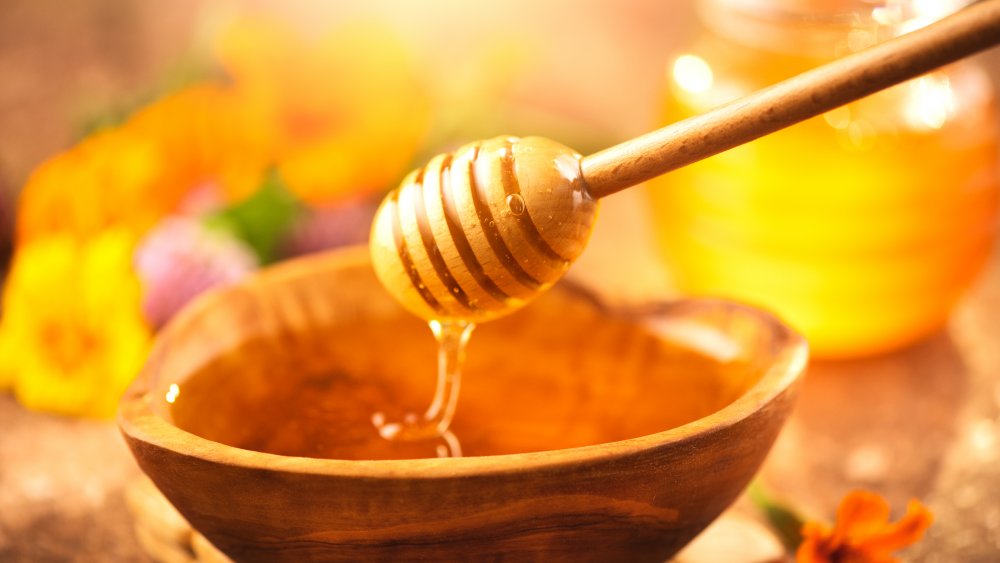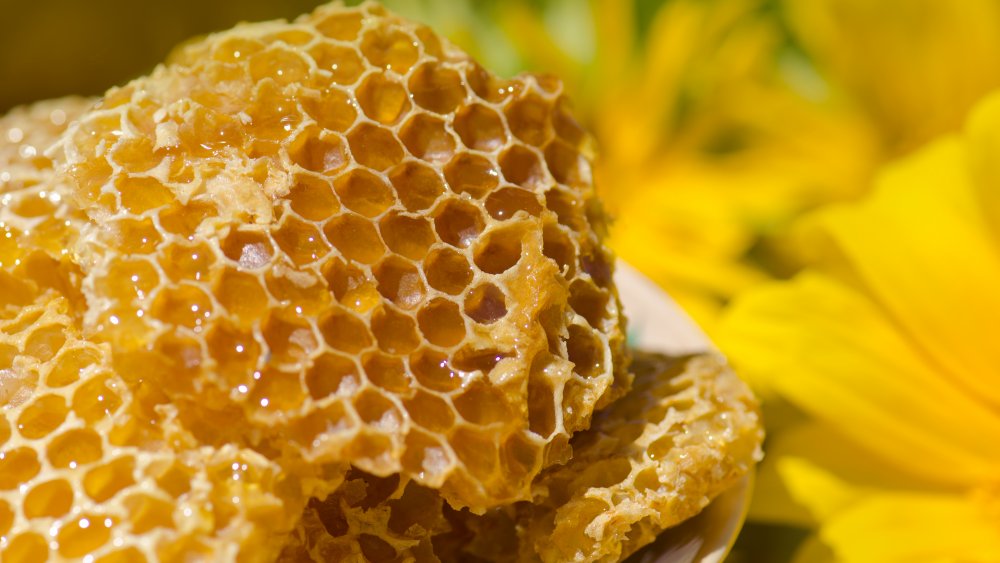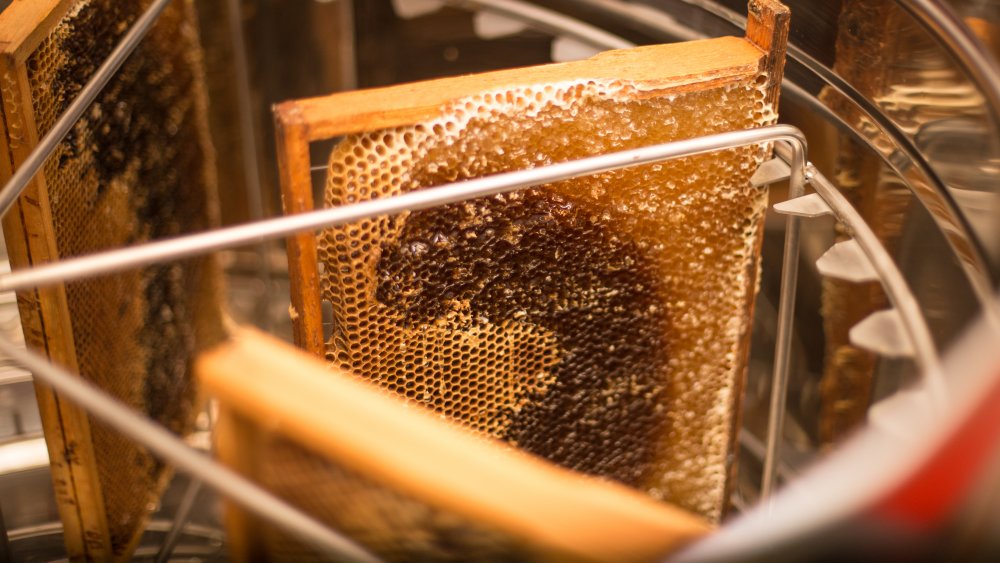Don't Buy Honey Again Before Reading This
When you think about honey, you picture a golden, pure, and sweet nectar that probably wafts into your consciousness. While honey consumption globally has been on the rise, honest working beekeepers have experienced the negative impact of producers of altered, fraudulent honey (via Garden Culture Magazine). The Economist reports that the golden nectar presented to consumers is often anything but pure, with "fillers" like rice syrup added. According to the US Pharmacopeia's Food Fraud Database, honey is the third most adulterated food on the market, following in the footsteps of milk and olive oil (yes, you read that correctly).
Although adulterated honey isn't necessarily deemed unsafe for consumers, it's not benefiting them or the industry as it undercuts the ability for authentic honey to blossom within the market space (via Insider). And who ends up getting the short end of the stick? The consumers looking for authentic honey to use in their food and the poor little bees who are seeing their numbers dwindle dramatically every season. A decrease in bee population means an opportunity for fake (or at least adulterated) honey manufacturers.
What is honey laundering?
Reuters reported that the US Department of Justice charged two major players in the sphere of honey-laundering in 2013 for importing adulterated honey from China, some of which contained unauthorized antibiotics (it was called Honeygate). That's a major no-no for the US, who has implemented tariffs on Chinese honey in an effort to mitigate the arrival of fake honey on our shores (via Vice). So, what are they doing with the honey exactly? Honey doctors would take the real honey and mix in other things like high-fructose corn syrup or beet syrup, according to Insider.
Vice reports that the sugars found in plants that bees typically buzz toward are called C3 sugars, so when you find anything other than that during testing — for instance, C4 sugars, that come from corn and wheat — you know you have a problem. As testing evolved, so did honey launderers, who figured out how to create C3 sugars using other plants, like rice (via Vice). It made the C4 detection test ineffective, so scientists began looking at the pollen in the honey to determine its source. Jim Gawenis, a biochemist, told Vice that honey launderers can just add pollen to the product and beat that new test, too.
One of the antibiotics found in the honey during Honeygate? Chloramphenicol. According to the Mayo Clinic, it is something that "should only be used for serious infections in which other medicines do not work."
Fake honey is harming the bee industry at large
When bigger batches of honey produced at a fraction of the cost in China begin to saturate the market, everyone suffers. Depending on where you are in the world, fake honey market share varies. Insider reports that a 2018 study of fake honey conducted in Australia suggested an estimated market share of about 28 percent. A US lawyer working on a class action lawsuit stated that the US market share was closer to a jaw-dropping 70 percent.
Another reason US consumers should be alarmed over adulterated honey is that about 400 million pounds of fake honey goes into food production, according to a Washington Post report. Even if you don't buy honey, odds are you're still consuming it. Beekeeping is a profession that goes back 9,000 years, says Garden Culture. It's relatively difficult to master, and because of the effect of fake honey on the market, some beekeepers are leaving the honey-making business altogether for pollination, reports Insider. Some have moved to almond tree pollination, which boasts its own set of problems (via Eat Like No One Else). Bees can get stolen, pick up diseases, and much more. The fake honey market is leaving consumers with less accessibility to pure honey, beekeepers without a stable source of income, and bees themselves with an uncertain future.


